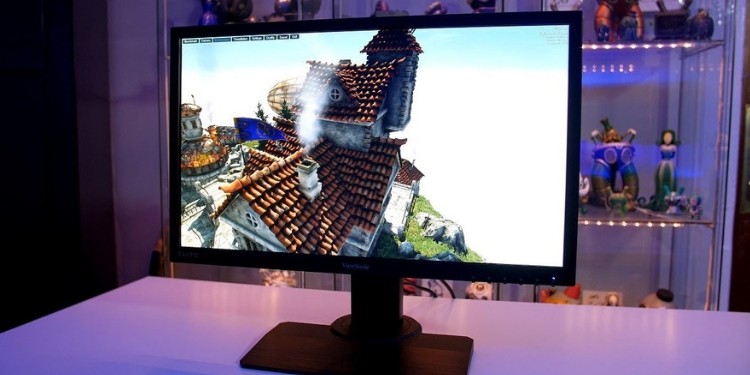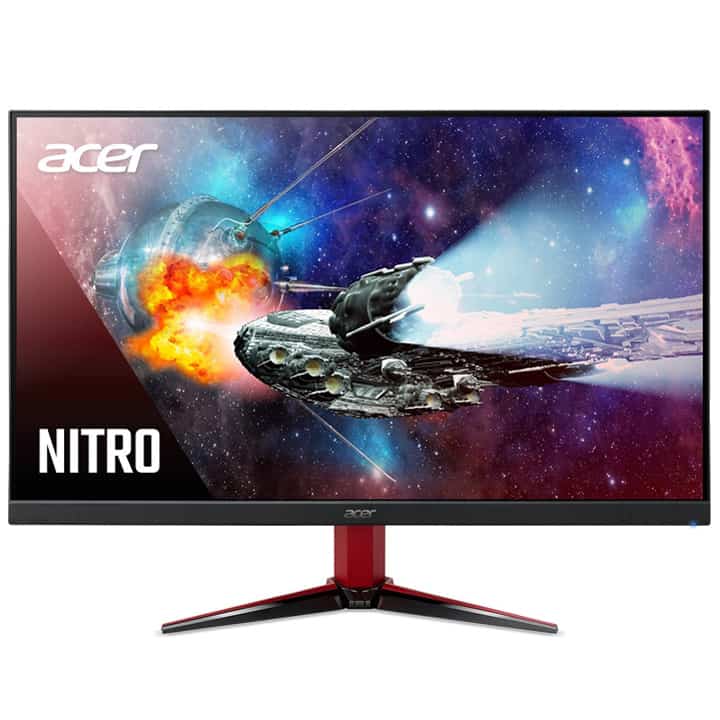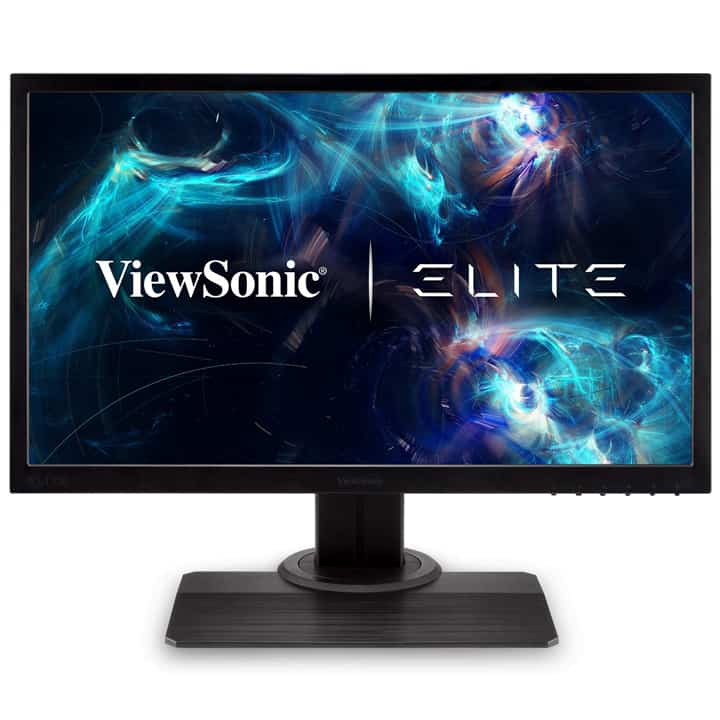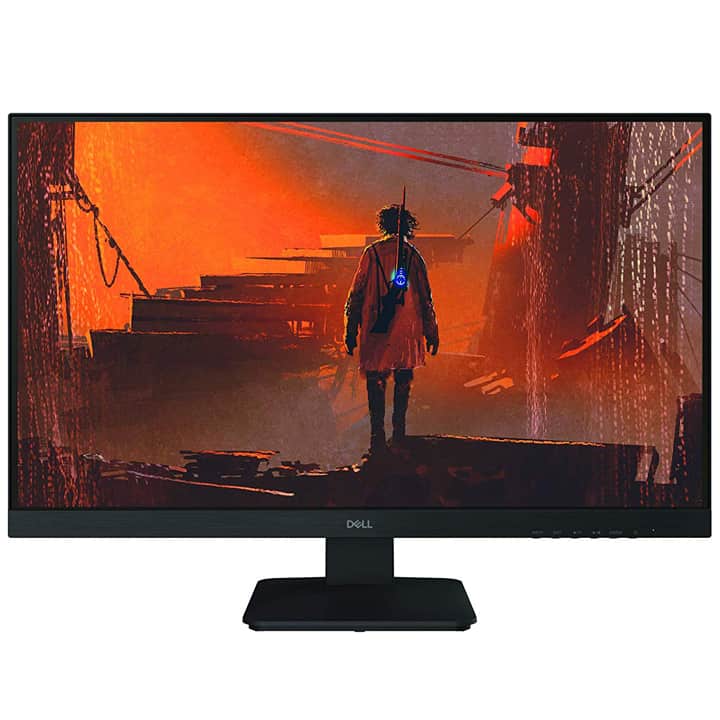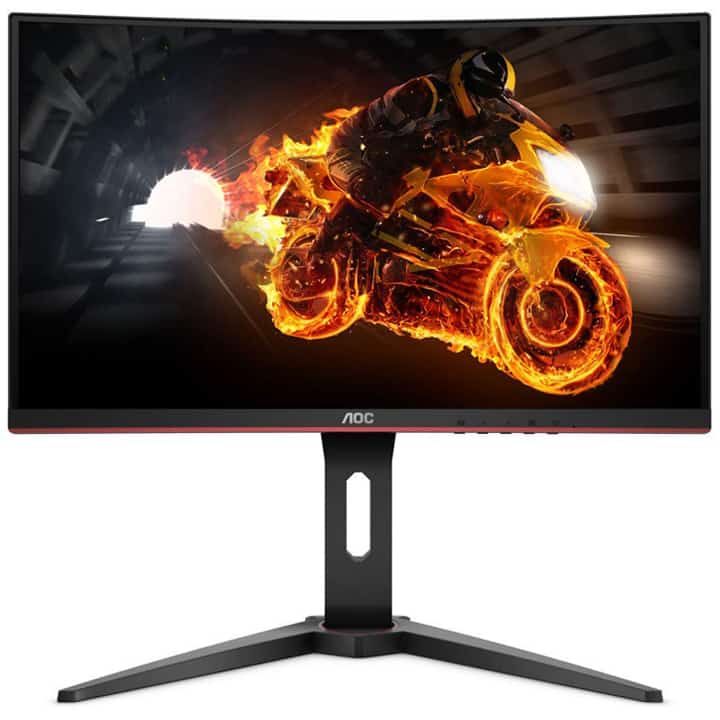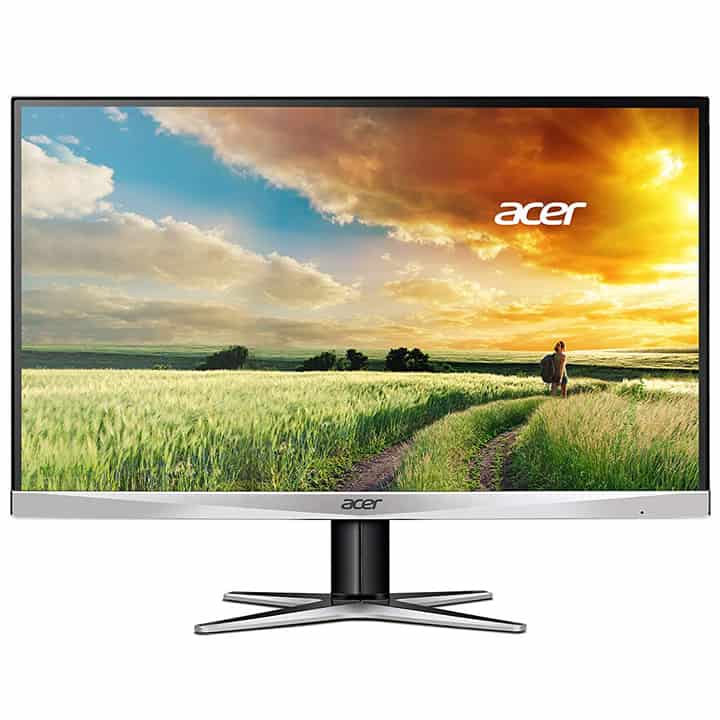Gaming monitors have a lot of extra features that regular monitors don’t, many of which provide a great edge to gamers. Perhaps the most important spec is the higher refresh rate, usually 144Hz, which enables the user to experience a whole new level of gaming in terms of smoothness, especially for professional-competitive gamers.
Apart from the refresh rate, some gaming monitors offer higher resolutions too– up to 1440p and 2160p (4K)– and lower response times. Let’s have a look at our top five review of best gaming monitors under $300 in 2019.
great viewing angles
Acer Nitro VG271
- Panel: 27-inch 1080p IPS
- PPI: 81
- Refresh Rate: 144Hz
- Response Time: 1ms VRB
- Color Rating: 8-bit colors w/ 99% sRGB
- VRR Tech: AMD FreeSync
RGB lighting
ViewSonic Elite XG240R
- Panel: 24-inch 1080p TN
- PPI: 91
- Refresh Rate: 144Hz
- Response Time: 1ms GTG
- Color Rating: 6-bit + A-FRC colors w/ 100% sRGB
- VRR Tech: AMD FreeSync
Best 27-inch
Dell D2719HGF
- Panel: 27-inch 1080p TN
- Color Rating: N/A
- PPI: 81
- Refresh Rate: 144Hz
- Response Time: 2ms GTG
- VRR Tech: AMD FreeSync
Best 1080p 144hz Monitor
AOC C24G1
- Panel: 23.6-inch 1080p VA
- PPI: 93
- Refresh Rate: 144Hz
- Response Time: 1ms MPRT
- Color Rating: 75% Adobe RGB
- VRR Tech: AMD FreeSync
WQHD resolution
Acer G257HU
- Panel: 25-inch 1440p IPS
- PPI: 117
- Refresh Rate: 60Hz
- Response Time: 4ms GTG
- Color Rating: 8-bits
- VRR Tech: None
Table of Contents
1- Acer Nitro VG271
Acer Nitro Series Offers the Best Monitor Under $300
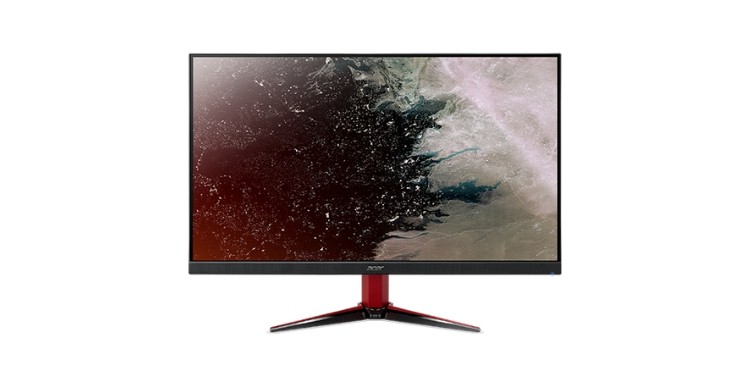
- Panel: 27-inch 1080p IPS
- PPI: 81
- Refresh Rate: 144Hz
- Response Time: 1ms VRB
- Color Rating: 8-bit colors w/ 99% sRGB
- VRR Tech: AMD FreeSync
- IPS panel provides great viewing angles
- Much brighter than other screens
- The price is close to many 1440p monitors
Acer is a well-known brand which manufactures some of the most elite-class monitors. The Acer Nitro VG271, on the other hand, is a budget-class screen that is targeted towards Esports gamers. The screen looks quite appealing, as it features a frameless design along with a wonderful stand.
The monitor features a 27-inch IPS panel along with a 1080p resolution and 144Hz refresh rate. Honestly, it’s not super common to see 144Hz IPS panels at this price range, so that is nice. However, the 1080p resolution on a 27-inch screen means this monitor isn’t quite as sharp as we’d like.
This is somewhat made up for, though, thanks to the very bright image and vibrant colors (99% sRGB color space). This color space is more than enough for gaming (there is no need for wide-gamut unless the user intends to do color-critical tasks). The IPS panel also ensures the view is consistent from any angle and that there isn’t any color-shift near the corners.
However, there might be a tiny downside: pricing. Because of these extra features, this 1080p monitor comes dangerously close to the 1440p price range. In fact, you could easily get a 1440p monitor for just a few extra bucks.
We recommend this screen to anyone who wants to experience the best of the 144Hz refresh rate with great viewing angles. Moreover, there are no other monitors in this range that provide an IPS panel along with a 144Hz refresh rate.
2- ViewSonic Elite XG240R
E-Sports focused Best 24-inch Monitor Under $300
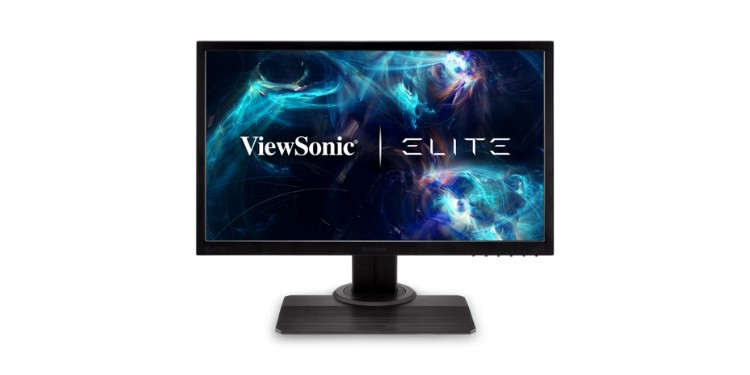
- Panel: 24-inch 1080p TN
- PPI: 91
- Refresh Rate: 144Hz
- Response Time: 1ms GTG
- Color Rating: 6-bit + A-FRC colors w/ 100% sRGB
- VRR Tech: AMD FreeSync
- Offers lots of gaming-oriented features
- Provides stunning RGB lighting
- Doesn’t feature a true 8-bit panel
The ViewSonic Elite XG240R is an improved version of the previous generation model: the XG2402. This monitor is targeted towards esports gamers and provides a lot of extra features which are helpful while competitive gaming.
The monitor has an older look on the front with thick bezels (by today’s standards, at least) and a classy stand. As a modern touch, this monitor offers RGB lighting on the back in arrow-like shape and can be customized and controlled through various peripheral RGB software like Razer Chroma.
The screen features a 24-inch TN panel, but the quality of this TN panel is much better than other panels and only the extreme corners had a slight color-shift. The contrast levels of the screen were also quite good and provided deep blacks. Speaking of which, the screen offers black stabilization, which is a very useful feature when playing competitive FPS games, as it enhances visuals in the shadowy areas.
The color reproduction of the screen was enough for a gaming monitor, having a color space support of 100% sRGB, however, do not expect it to be useful for any color-critical work, but that is the norm for most TN displays. Overall, this panel is more vibrant than many other comparable TN screens in this bunch, though.
3- Dell D2719HGF
Dell produces one of the Best 27-inch Monitor Under $300
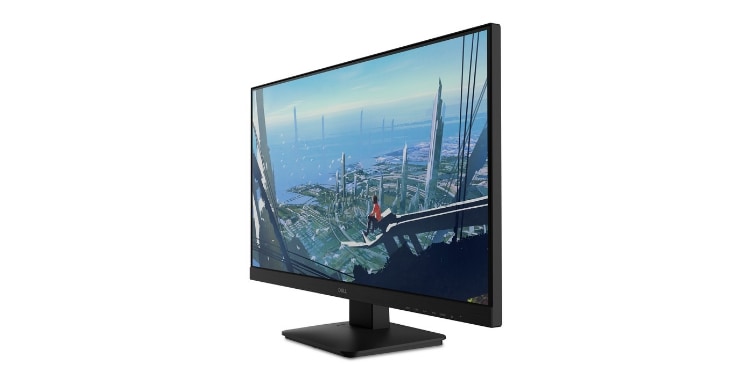
- Panel: 27-inch 1080p TN
- Color Rating: N/A
- PPI: 81
- Refresh Rate: 144Hz
- Response Time: 2ms GTG
- VRR Tech: AMD FreeSync
- One of the cheapest bezel-less 144Hz screens
- The colors seem washed out
- The built-in speakers are horrible
Dell is a name you definitely would have heard of since this company is famous worldwide for its various products. Their monitors are some of their best products, especially from the Ultra-sharp lineup for business and Alienware lineup for gaming. The Dell D2719HGF, however, despite not being from either of those two lineups is a quality, budget-oriented gaming monitor targeted towards entry-level gamers.
The monitor offers a bezel-less panel on three sides while the lower edge has a bezel providing the user with buttons for configuration. The stand quality is mediocre but you can’t truly expect greatness in such a low-cost monitor.
The 27-inch monitor has a TN panel with a 144-Hz refresh rate. This TN panel is a bit disappointing as it had a lot of color shift; this was only made worse by its larger size. The larger screen paired with a lower resolution also does it no favors in terms of clarity. The contrast levels were okay, but nothing to write home about.
It is worth noting that, out of the box, the color reproduction is horrible; however, with slight software calibration, the monitor provided satisfactory results.
The good thing is that these problems are barely felt during gaming and thanks to the high refresh rate, gaming feels quite smooth. For anyone who has not experienced 144Hz monitor and does not want to spend a lot of money, this monitor is excellent, as it costs slightly more than a regular 27-inch monitor.
4- AOC C24G1
AOC brings us the Best 1080p 144hz Monitor
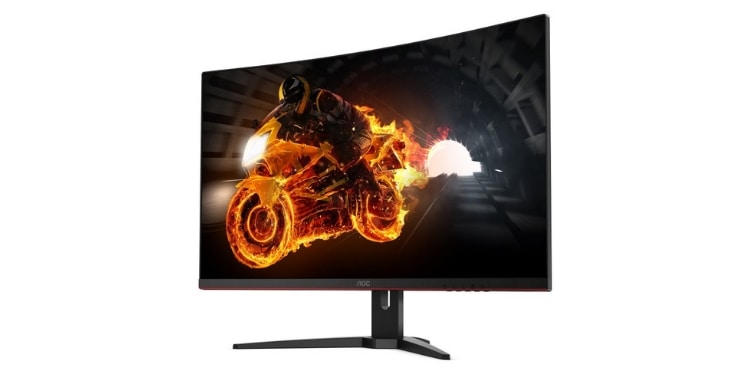
- Panel: 23.6-inch 1080p VA
- PPI: 93
- Refresh Rate: 144Hz
- Response Time: 1ms MPRT
- Color Rating: 75% Adobe RGB
- VRR Tech: AMD FreeSync
- VA panel offers balanced visuals
- Curved and frameless design
- Brightness levels could have been better
AOC monitors may not be the most well-known monitors out there, but they offer great value for the price. The AOC C24G1 is a curved screen with a small 1500R curvature, which means that the user will have to sit quite close to have a good viewing angle.
It features a frameless design with a small bezel at the lower edge and offers buttons on the bottom of the screen. The V-shaped stand of the monitor not only looks spiffy but is also sturdy and offers space for cable management.
The 23.6-inch screen also has a VA panel, the quality of which is unexpectedly great as it matches some high-end gaming monitors. The most prominent feature of this panel is that it features contrast levels that are three times as… contrasted compared to most monitors. This gives its colors a deep impact. The viewing angles are as good as an IPS panel and there is no backlighting bleed at the corners.
Its color levels are better than an average gaming monitor and covers around 99% of sRGB color space. This is more than enough for gaming, but if you want to do some dedicated photo editing, then we would recommend you buy at least a QHD wide-gamut monitor.
5- Acer G257HU
A QHD beast and easily the Best 1440p Under $300
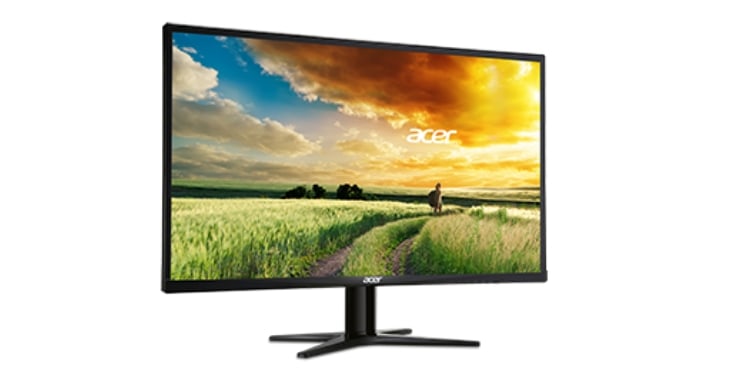
- Panel: 25-inch 1440p IPS
- PPI: 117
- Refresh Rate: 60Hz
- Response Time: 4ms GTG
- Color Rating: 8-bits
- VRR Tech: None
- The WQHD resolution provides crisp visuals
- The stand feels very solid
- The 60Hz refresh rate is lowest on our list
A lot of gamers have moved to high-resolution gaming, with some people using 4K resolutions and some people preferring the QHD or 1440p resolution, as the requirements for 4K gaming are quite… demanding.
So, here we are, with Acer G257HU, a cheap monitor providing a great viewing experience. The monitor features bezel-less design on three sides and comes with a beautiful X-shaped stand.
The monitor provides a 25-inch 1440p IPS panel, which offers a sharp image. Most users shifting from 1080p to 1440p feel a drastic change and a 1440p IPS panel gets beaten only by a 4K IPS screen. The panel quality is great and has very little backlight bleeding.
However, in my opinion, the 60Hz refresh rate feels inferior after using a 144Hz monitor. Admittedly, some of our other reviewers aren’t as harsh on this as I am, but it’s hard going back to 60Hz… it just ends up feeling a little sluggish.
That being said, I can admit that this feels a different niche. The color reproduction on this screen is amazing; however, this monitor, too, does not feature a wide-gamut color space, so it’s not ideal for working with images or videos. Gaming, on the other hand, looks brilliant and 1080p monitors seem blurry after using this one.
We recommend this monitor to casual gamers who do not want to enter the Esports realm, as 60 FPS is not bad for casual gaming and 1440p covers up for the low refresh rate.
Keep This in mind when buying your New Gaming Monitor
Monitors are complex and it takes a lot of knowledge to understand the various specifications. Gaming monitors, in particular, are focused on a specific set of specifications which we will be discussing here, so let’s have a look at the basic specifications of a gaming screen. This way you can more easily separate gaming monitor deals and scams in the future.
Size and Resolution
Monitors are available in a lot of sizes but for competitive gaming, the perfect screen size is between 24 inches and 27 inches. Casual gaming can be done on bigger-sized monitors too.
The resolution governs the sharpness of the picture. A higher resolution means there are more pixels present which makes for better picture quality. The budget gaming monitors usually have a 1080p resolution (1920×1080) while high-end monitors offer up to 2160p (3840×2160, aka 4K).
PPI (Pixels Per Inch)
If you take the size of the monitor and the resolution, you can find the PPI. The name really says it all with this specification. PPI reflects the density of pixels and is a is a better indicator of monitor clarity than something like resolution.
IPS, TN, and VA: Panel Technology
The panel is the basis of a screen, so it is pretty important, but there aren’t a lot of types; in fact, there are really only 3 main types:
- IPS panels are considered one of the best as it offers great picture quality with excellent viewing angles.
- TN panels are budget-oriented panels which offer poor viewing angles but provides better response times. They are often paired with higher refresh rates at lower price points. IPS and VA can reach those heights, just for more $$.
- VA panels are balanced and offer good viewing angles along with good response times but, in terms of overall quality, IPS wins.
Refresh Rate
The refresh rate on a monitor, measured in Hertz, functionally represents the highest frame rate you’ll be able to push (although you can overclock your monitor).
60Hz means you’re limited to 60 FPS while 144Hz means you can push up to 144 FPS. A faster frame rate will make things look smoother, which is great for competitive gaming.
Regular monitors usually have a refresh rate of 60Hz, but gaming monitors also frequently feature a 144Hz refresh rate (and even 165Hz or even up to 240Hz).
Color Space Support
Color space support describes the ability of the panel to display colors. These are listed as a percent and an acronym. The percent is straightforward: the higher, the better. The acronyms are different standards, like sRGB and DCI-P3.
On the consumer market, where there is not much focus on the color space, 100% sRGB color space is high-end. However, professional monitors provide much better color spaces and support up to 100% DCI-P3 or at least 100% Adobe-RGB color space.
VRR Technology
When your FPS is too much faster or slower than your effective refresh rate, you’ll get tearing, which is when half the screen displays one frame and the other half displays a different frame.
This can be prevented with the help of VRR (Variable Refresh Rate) technologies. To take advantage of these technologies, however, you will need a monitor that has it and a compatible GPU.
The current technologies for tearing prevention are GSync and FreeSync. Freesync costs much less and is seen most often on budget-oriented screens. Freesync is supported by AMD GPUs… and Nvidia GPUs have also received support as well. G-Sync, on the other hand, costs more, but offers lower input-lag. That being said, it only works with Nvidia GPUs.
Response Time
The response time of a monitor is linked with the ability of the monitor to display the pixels. The higher the response time of a monitor, the longer the delay on the screen. The response time adds up to the overall input lag. Anything below 5ms is good for gaming, which is great since almost all gaming oriented monitors meet this standard.
That being said, this can be complicated some by the fact that some companies use different standards to measure this…

